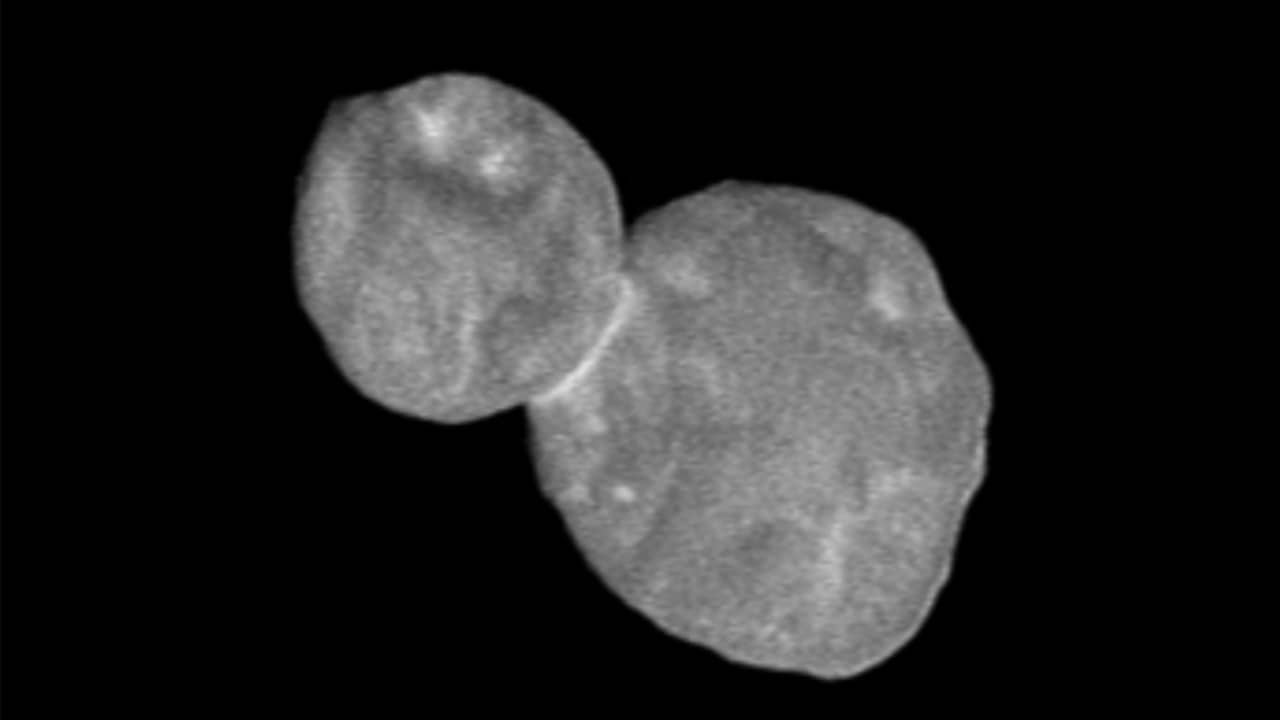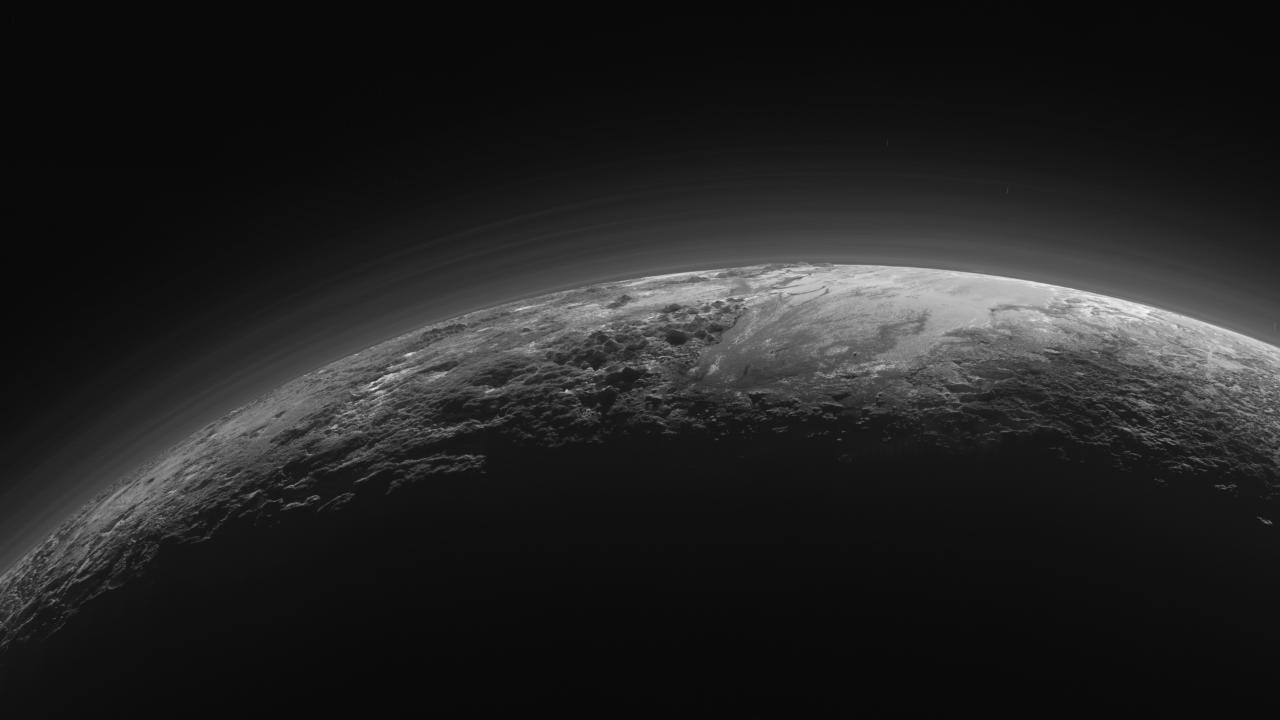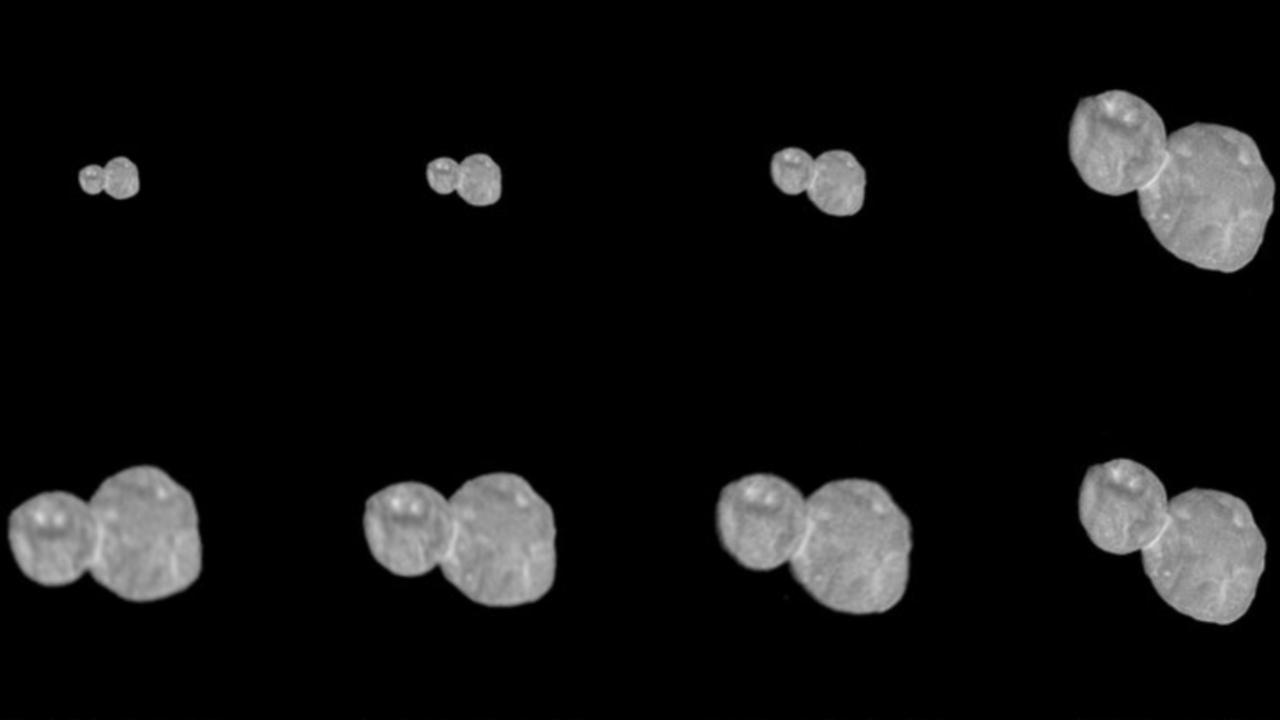After making a fly-by visit of a tumbling snowman-shaped rock on New Year’s day, the rock is now making its out-of-this-world film debut in a new NASA video released today! New 📸! Around and around: This gif shows the propeller-like rotation of #UltimaThule as seen by the Long Range Reconnaissance Imager (LORRI) aboard @NASANewHorizons as the spacecraft sped toward its close encounter. @nasa https://t.co/lBM4L8EctG pic.twitter.com/8PhJHsvVFa
NASA’s New Horizons mission team has stitched together an animation of ‘Ultima Thule’, the most
distant object ever explored
by humans with a spacecraft. The small, icy rock is seen spinning like a propeller over on its centre, appearing like two fused spheres that have been measured to be roughly 33 kilometres long. [caption id=“attachment_5903751” align=“alignnone” width=“1280”] The most high-res image New Horizons has captured and beamed back of the tumbling snowman-looking Kuiper belt object, Ultima Thule. Image credit: NASA[/caption] Many – NASA included – have been struck by Ultima Thule’s resemblance to a snowman for multiple reasons – its icy interior, unusual shape and the time of year New Horizons began its close approach of the rock – just around Christmas, 2018.
The most high-res image New Horizons has captured and beamed back of the tumbling snowman-looking Kuiper belt object, Ultima Thule. Image credit: NASA[/caption] Many – NASA included – have been struck by Ultima Thule’s resemblance to a snowman for multiple reasons – its icy interior, unusual shape and the time of year New Horizons began its close approach of the rock – just around Christmas, 2018.
Ultima Thule is roughly 4 billion miles from Earth and rotates roughly once every 16 hours on Earth. The time-lapse movie released by NASA this week shows the rock over seven of those 16 hours. The movie was stitched together from images that the New Horizons spacecraft took over New Year’s Eve and New Year’s Day as it made its closest approach of the rock. However, the enormous distance and lag in communication over 4 billion miles meant that the images it captured were not sent back to Earth until just a few days ago, NASA said in a statement
. These snaps are only the latest in New Horizons’ streak of epic, distant observations on a journey beyond the solar system. [caption id=“attachment_5903701” align=“alignnone” width=“1280”] The landscapes of Pluto at twilight under a hazy sky, as seen by NASA’s New Horizons spacecraft in 2015. Image credit: NASA/JHU APL/SwRI[/caption] New Horizons also explored Pluto in 2015, capturing stunning images of the dwarf planet on its way towards the Kuiper Belt at the edge of the solar system.
The landscapes of Pluto at twilight under a hazy sky, as seen by NASA’s New Horizons spacecraft in 2015. Image credit: NASA/JHU APL/SwRI[/caption] New Horizons also explored Pluto in 2015, capturing stunning images of the dwarf planet on its way towards the Kuiper Belt at the edge of the solar system.
)